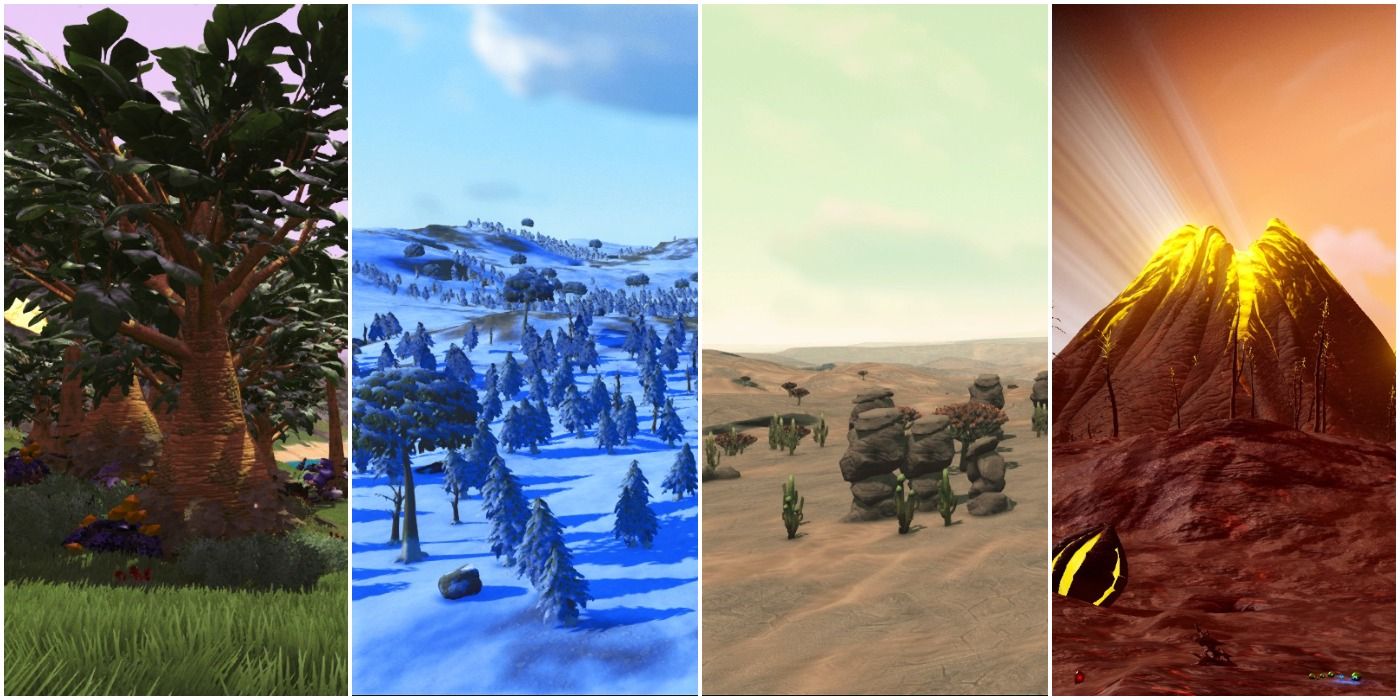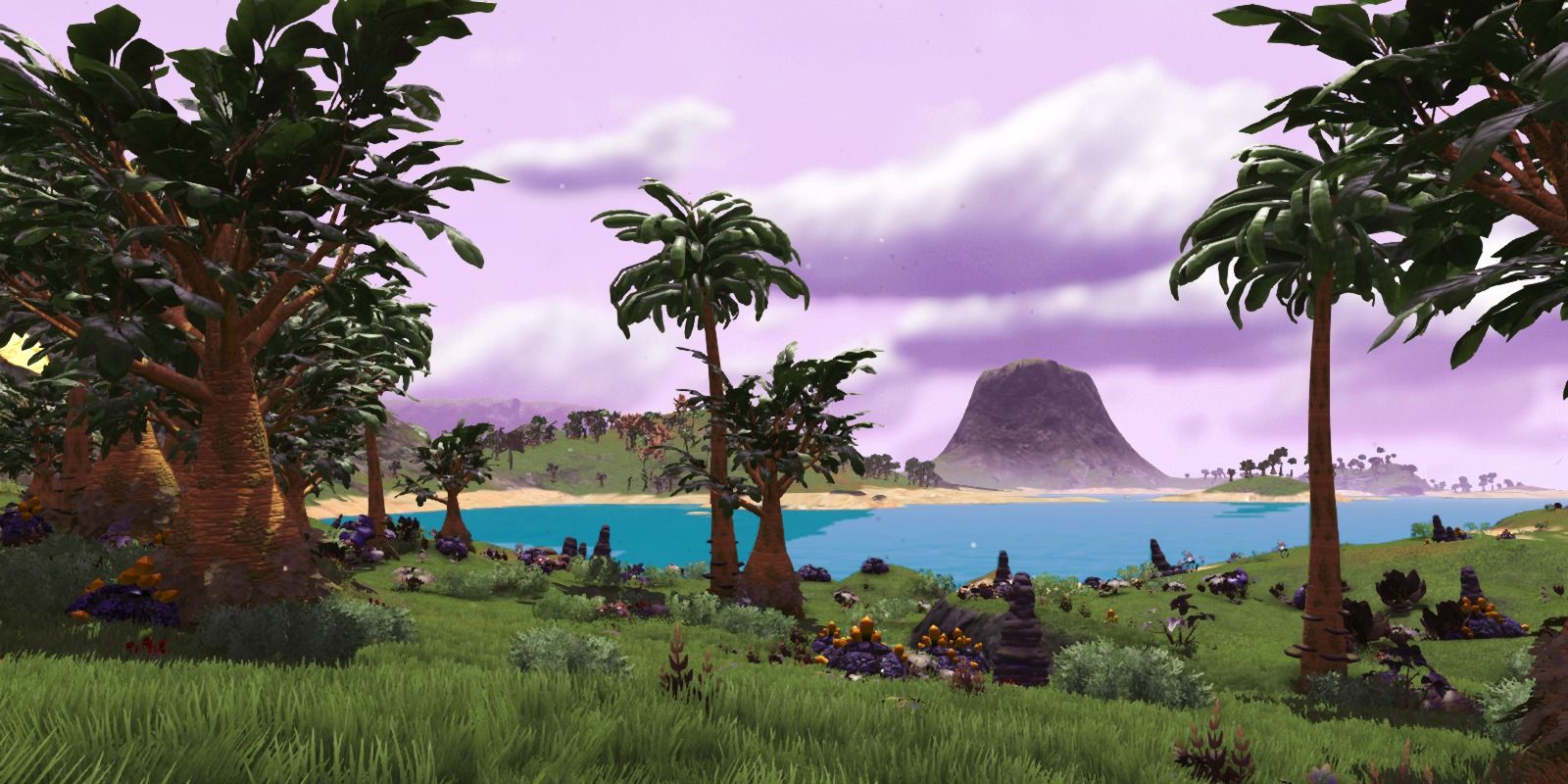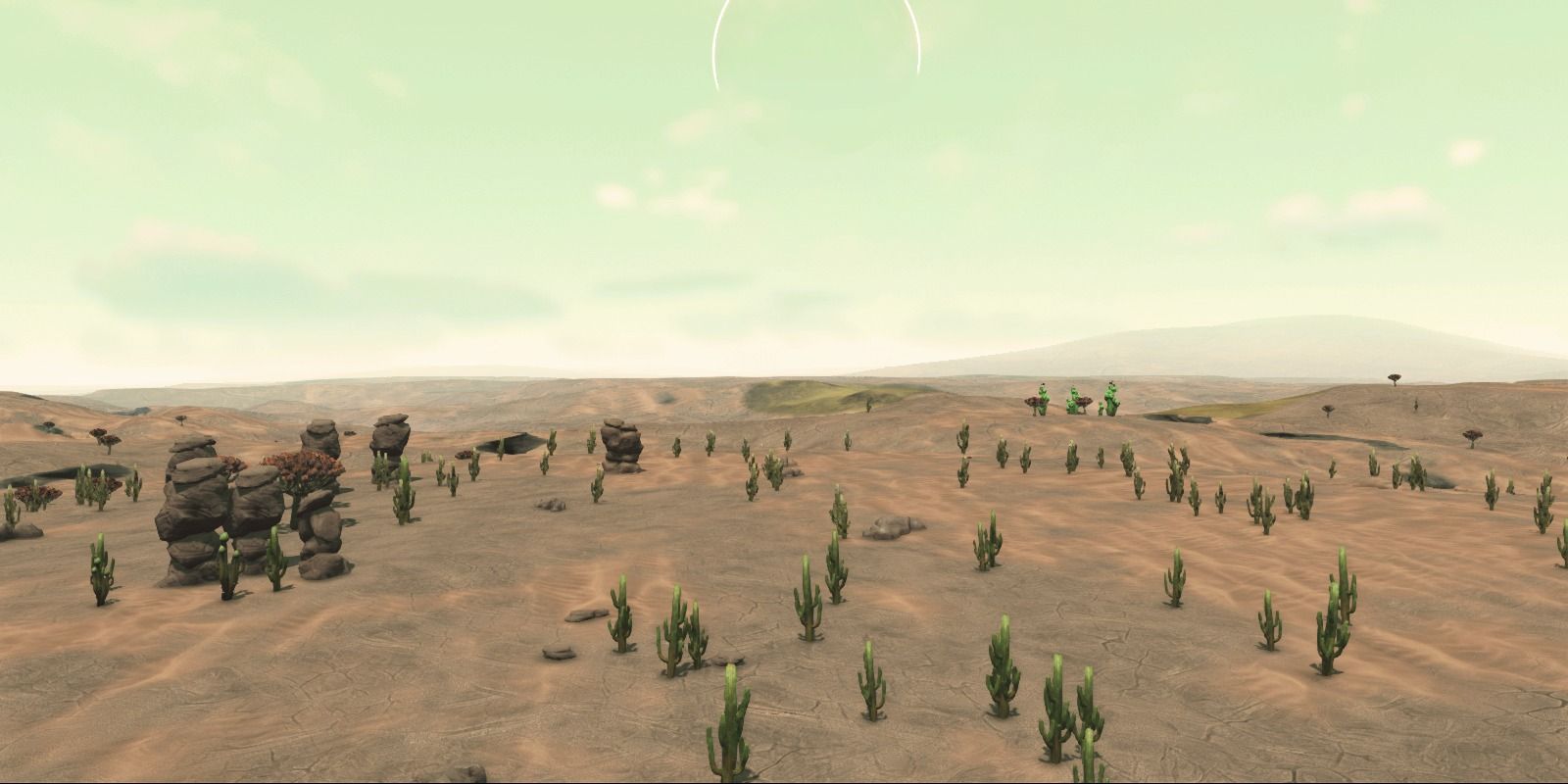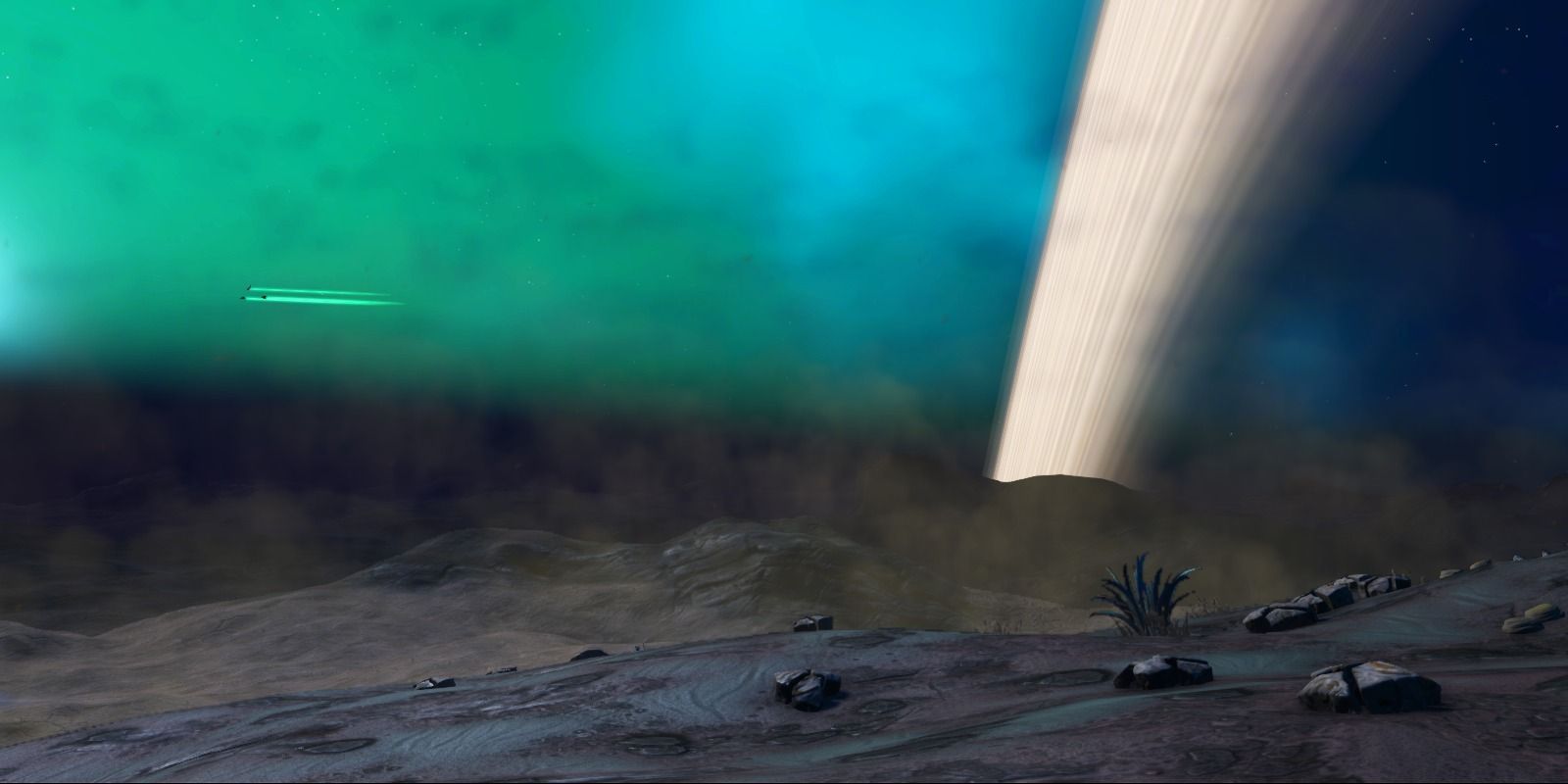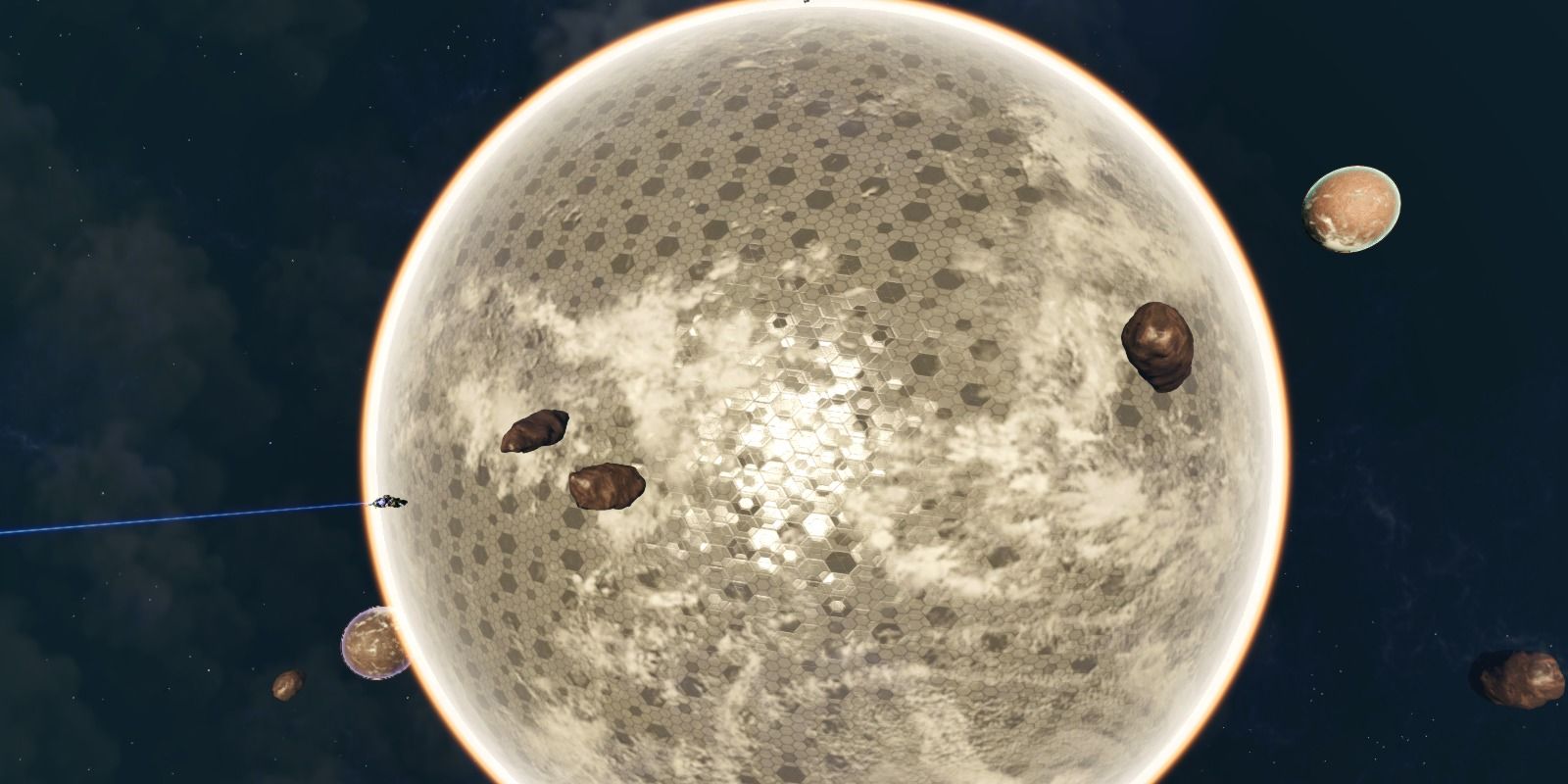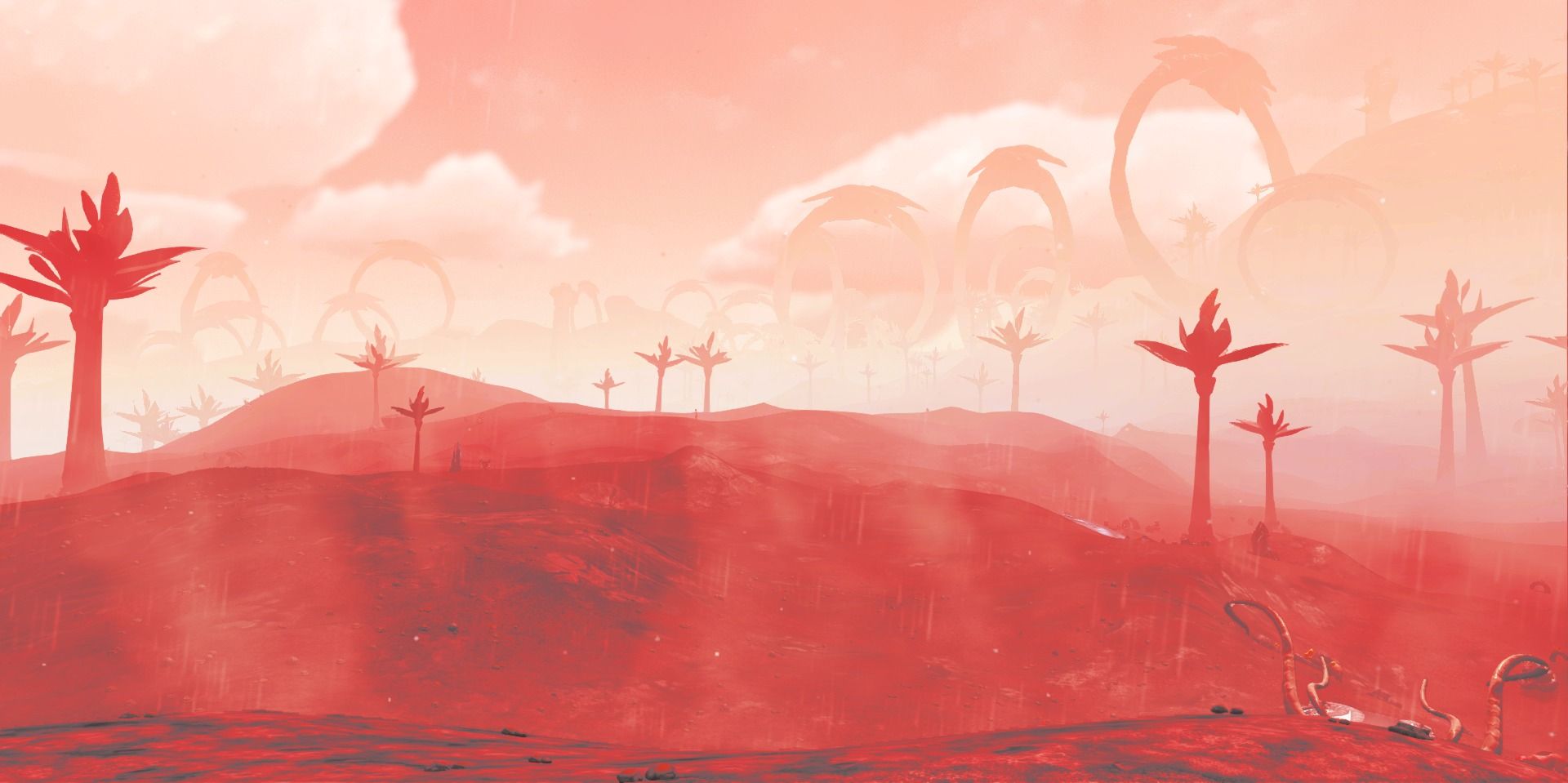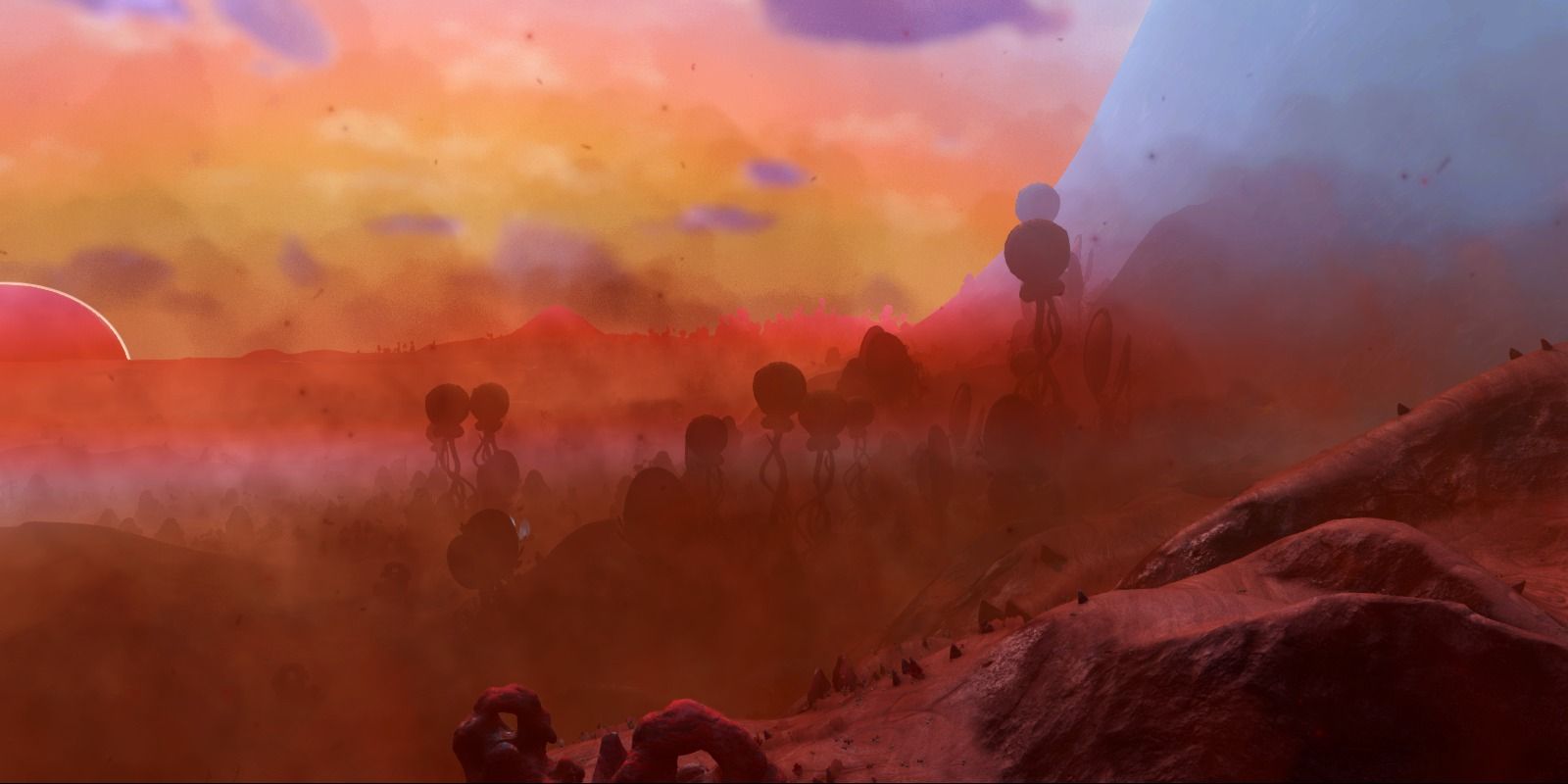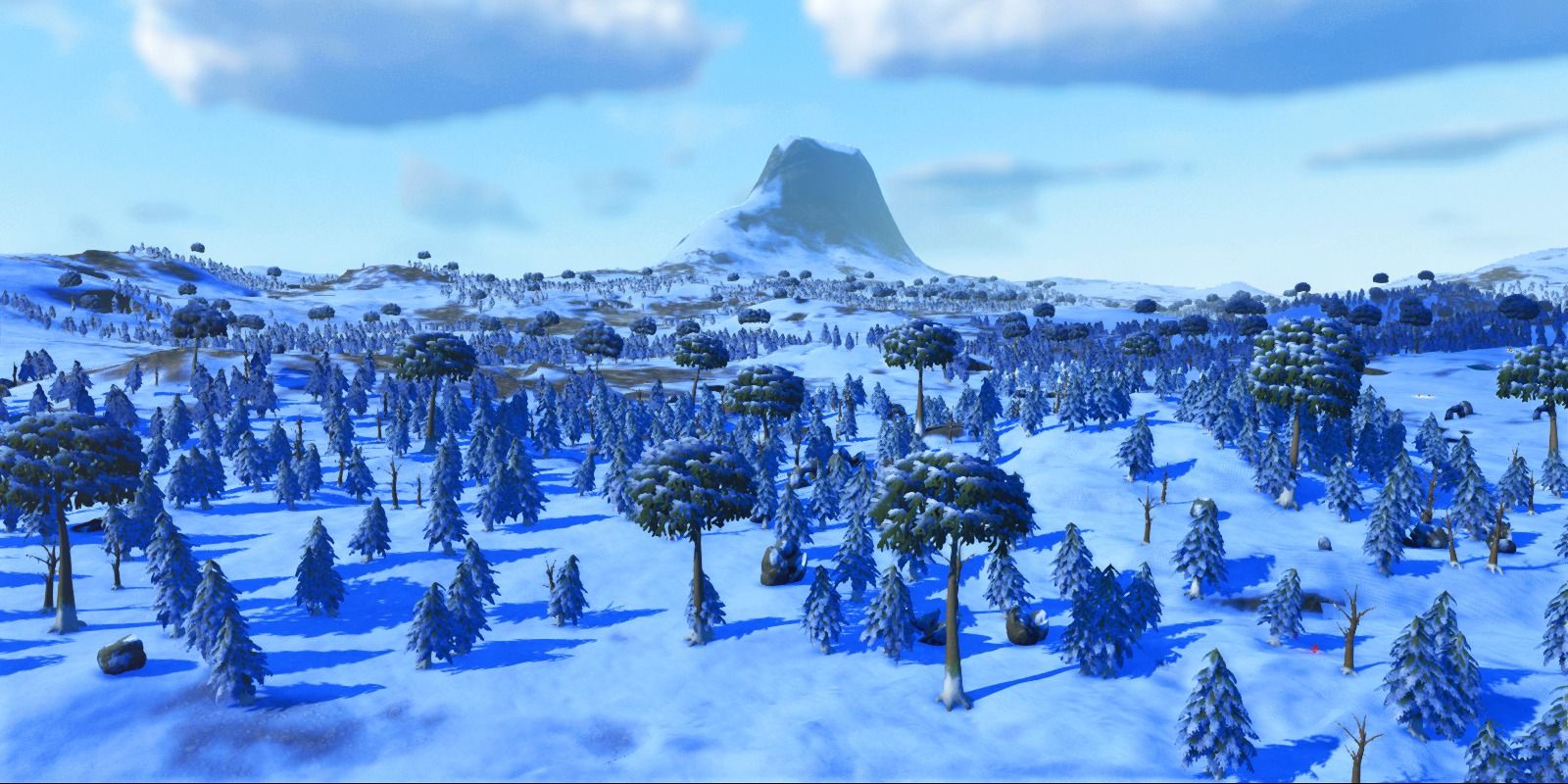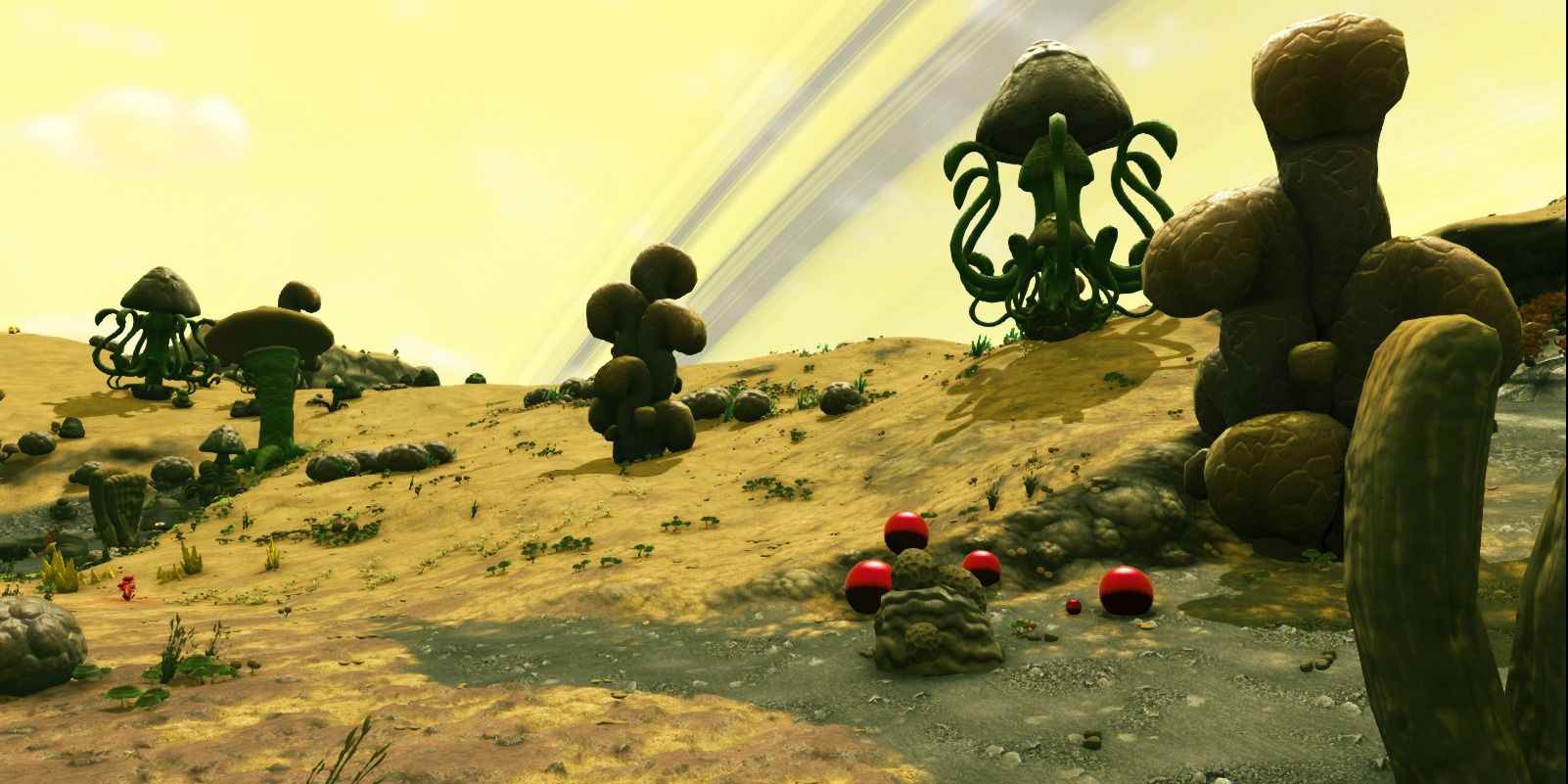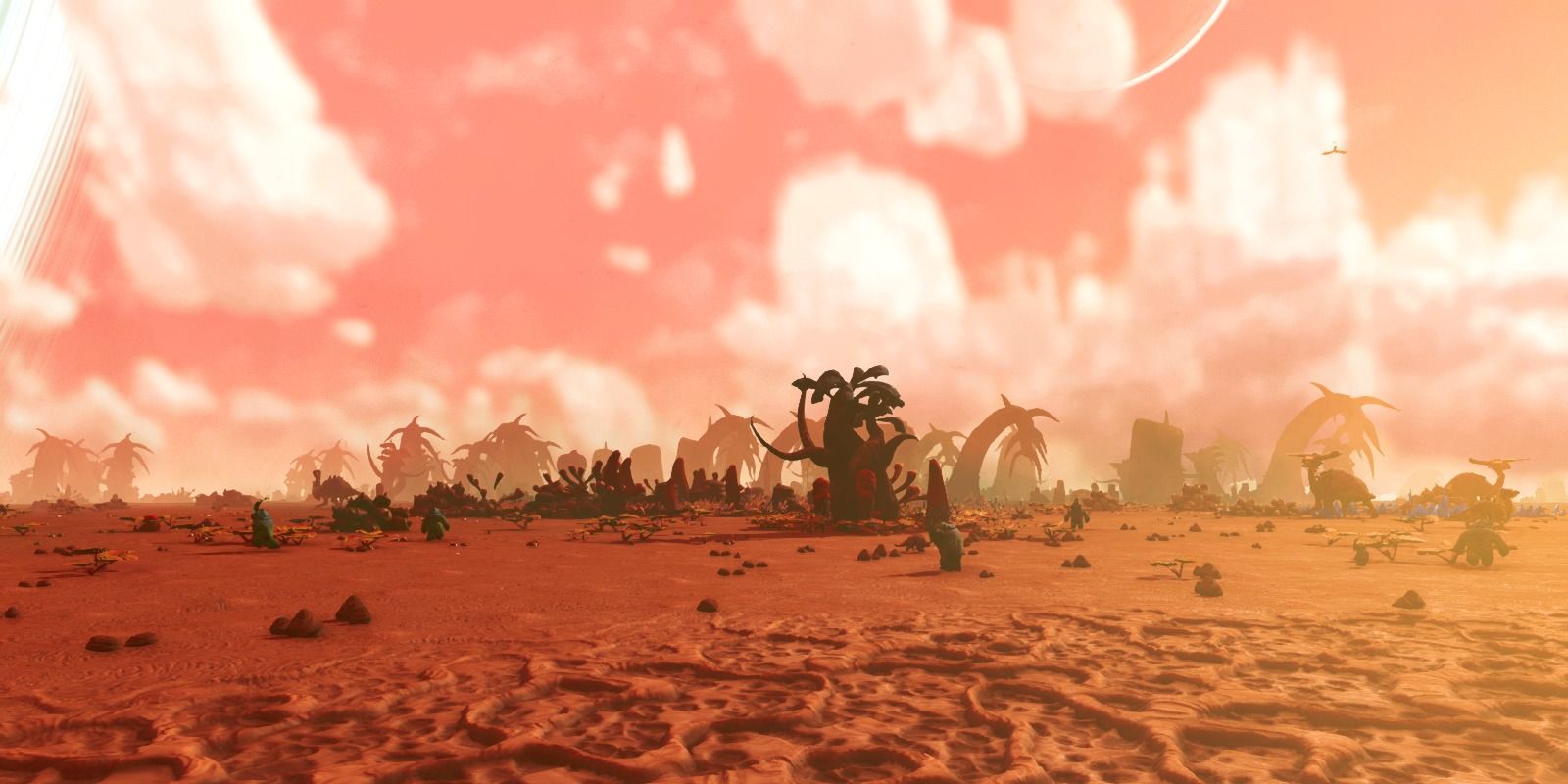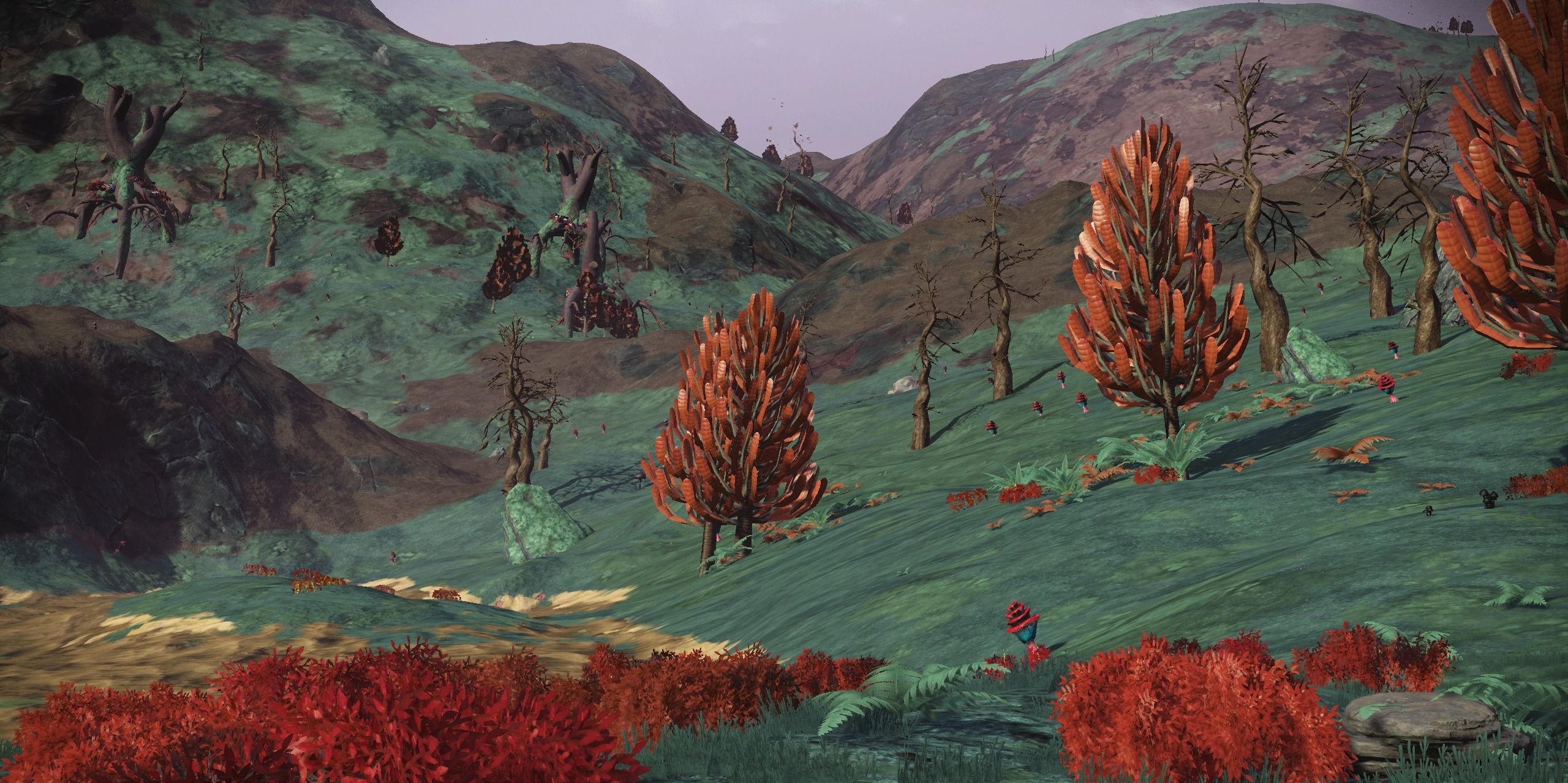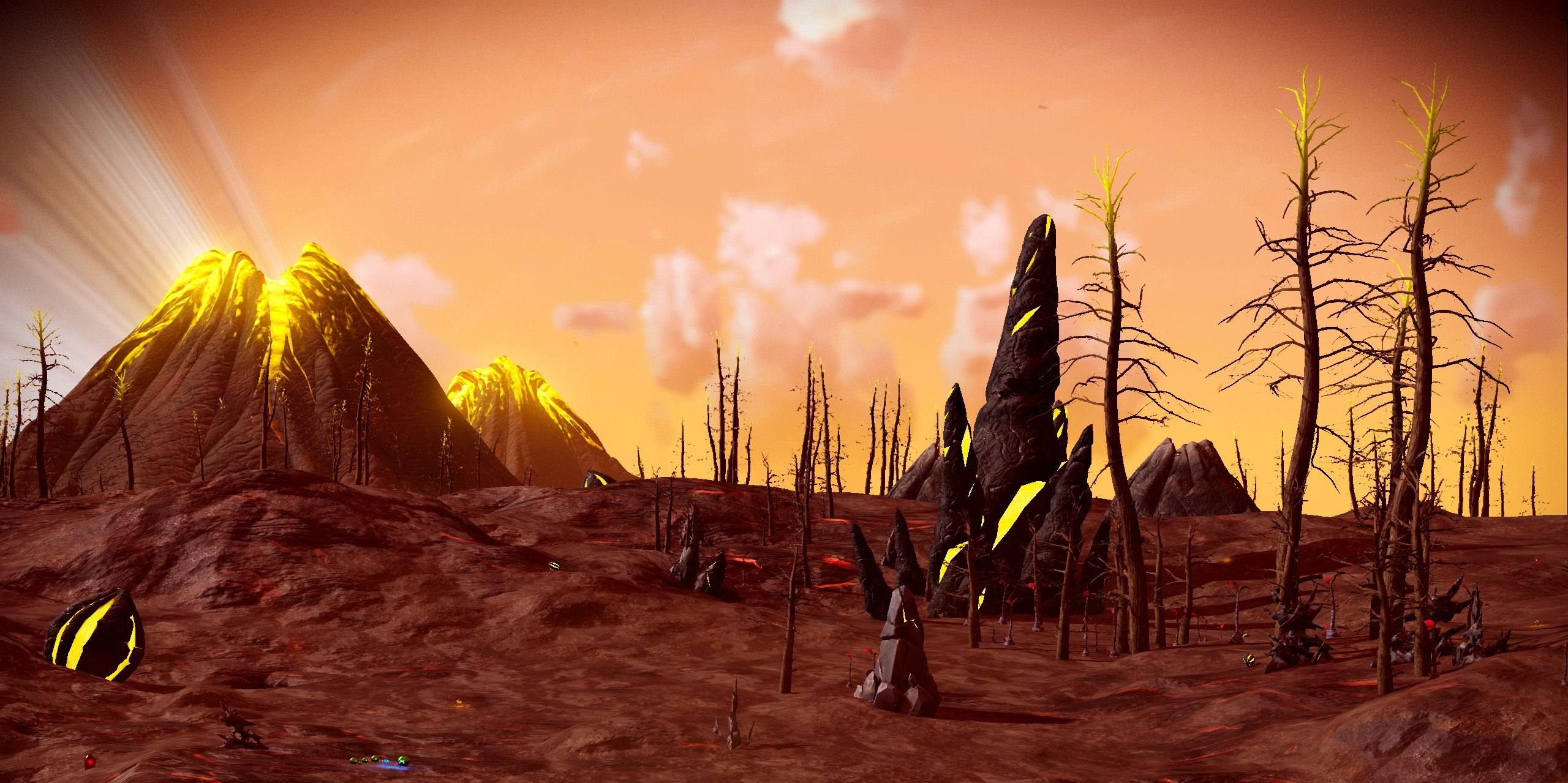No Man's Sky is one of the most comprehensive games out there when playing in the sci-fi genre. With its recent DLC Origins, players are not only given more upgrades to certain aspects of the game like the UI graphics, but Hello Games have also added billions of planets to the already burgeoning universe that has proven to be one of the largest maps in the known gaming universes.
While there are tons of games out in the sci-fi genre, this one, in particular, goes above and beyond in ensuring that players get the best bang for their buck in terms of gameplay. The game can be enjoyed solo or with friends and either way No Man's Sky offers a wide variety of challenges and unique sights to see. Finding planets that are great for building bases, materials, and other tasks is what drives players to explore the stars and expand their horizons.
Updated July 19th 2021 by Beau Boo Low: No Man's Sky has recently received yet another expansion from Hello Games. The Prism update offers a complete graphical overhaul, making the game's numerous planets even more varied and beautiful than ever before. Players will not only find more plants and terrain features, but they may also encounter improved weathers systems during their travels. Additionally, almost all creatures can now be tamed, and flying mounts are much easier to ride, allowing even more ways for players to traverse the new worlds they discover. This makes exploring new planets a much more exciting and rewarding experience. As such this guide has been updated to include useful information about the different biomes to be found in No Man's Sky.
11 Biome - Lush
Lush planets are essentially green Earth-like planets that have the perfect environment for gathering materials, building a base, and anything else that players might need. These planets have some of the most varied resources and animals that spawn on their surface.
There is a chance that a Barren Lush planet might spawn in a solar system; however, that's rare. Lush planets can most likely be found within yellow star systems, with imperfect and raging galaxies having a 2x higher chance and yellow stars in tranquil galaxies having a 4x higher chance of them spawning. With cross-play, this makes Lush planets fun to have bases on with friends.
Common Features Of Lush Planets
- Dense flora and fauna, with diverse, natural wildlife
- Bodies of water can often be found on these worlds
- The resources Paraffinium, Star Bulb and Nitrogen can always be found on these Planets.
- Since the origins update, some Lush planets have a chance of being corrupted or in the beginning stages of exotification. Signs of this include bioluminescent grass or plant life; the presence of objects normally found on exotic planets; and abnormal weather such as corrupted blood.
10 Biome - Barren
These planets are devoid of most plant life and usually have desert as their primary biome. Occasionally players will see trees and other fauna, but for the most part, it will be rocky and barren, as the name states.
While not completely ideal, this is the second most ideal weather compared to the Lush planet environments. However, the nights can get very cold, as is habitual of deserts, and the daytime extremely hot, causing hazard suits to kick in on more extreme barren worlds. They can also have heat storms, which are extremely powerful if not protected inside a cave or base. With players searching for sandworms, this would be a planet suitable for running around on.
Common Features Of Barren Planets
- Cacti of all shapes and sizes can be found on these worlds
- Although it is rare, water and oceans can be found on Barren Worlds
- Resources like Pyrite, Cactus Flesh, Aloe Flesh, and Sulphurine are very common.
- Some Barren planets have unique plants that provide Sticky Honey
9 Biome - Dead
One wants to think of the Desolation update that came out when thinking of dead planets, though that update covered more in terms of ships than planets, yet thinking about it will likely make players want to jump back into the update with its horror ridden content.
Dead planets themselves have no atmosphere, very low gravity, and no fauna or flora to speak of. They have higher amounts of resources for players to gather than other planets, including rusted metal. Bringing materials to keep bio-hazard suits going is a must on these planets, so load up on oxygen, life support gels, and dioxite if possible before exploring.
Common Features Of Dead Planets
- High concentration of resources, especially rusted metal.
- Pangean terrain with no bodies of water.
- No trading posts can be found on these worlds, but the player can build a base provided it is completely air-tight.
- While plant life is sparse, certain flowers can be found that provide specific resources depending on their color. Red flowers are oxygen-giving, yellow flowers are sources of sodium, and blue flowers will boost the player's exo-suit.
- Whispering eggs are frequently found on dead worlds in abandoned buildings. These eggs spawn hostile biological horrors but can be harvested as a great way of earning lots of units.
8 Biome - Exotic
As the name implies, these are planets with exotic elements, mostly in the form of unique flora and animals. They look different from space, some of them having hexagonal-shaped atmospheres or looking pockmarked on the surface.
They can have any weather pattern, and unlike dead worlds, there is no strain on bio-hazard suits that require the player to bring a plethora of materials to stay alive. Gold deposits and a handful of flora and minerals can sometimes be found on Exotic planets along with abandoned bases.
Common Features Of Exotic Worlds
- Like dead worlds, exotic planets will always have a pangean landscape with no water on the surface.
- Some of these worlds are true exotics, containing unique sub-biomes with strange terrain formations and strange new forms of wildlife.
- Resources vary greatly between different types of exotic biome, and as of the Visions update, many new sub-biomes have been added making these worlds even more diverse.
7 Biome - Mega Exotic
Like their Exotic brethren, this Mega Exotic biome type is characterized by having mega portions of everything found in other biomes. Imagine everything from other planets but giant. These planets were added in the Next update, and their unique atmospheres often create strange colors of light, from vibrant red to dismal black and white.
They can have any weather patterns and many varieties of flora and fauna. These planets are in a category of their own regarding minerals and resources and find players not wanting anything in size compared to the spawns. Most of the spawns are anything that can come from other biomes.
Common Features Of Mega Exotic Planets
- Plant life is diverse and often giant in size.
- It is possible for mega exotic worlds to have normal-sized flora like Lush worlds, although the grass is significantly thicker and trees are more frequent.
- Players can find any resource available in other biomes on Mega Exotic worlds
6 Biome - Scorched
Phosphorus, solanuim, and sulphurine can be found on Scorched planets, and with the high temperatures on the planet's surface, flora has adapted in interesting ways. Hazard protection is always on when players are exploring these surfaces, and depending on the type of planet, there can be anything from clear weather patterns to extreme and very powerful heat storms.
In some cases, scorched planets may set on fire during heat storms, and during this time, hazard protection will drain 3x faster than normal. Coolant upgrades are recommended for exploring these planets if players intend to be on them long-term.
Common Features Of Scorched Planets
- Rocky deserts similar to those found on barren worlds.
- Since the Origins update, scorched worlds have a chance of spawning mega-sized flora which cannot be scanned or mined
- Large deposits of Phosphorus, Solanium, and Sulphurine
5 Biome - Frozen
Frozen worlds are interesting because they're indicative of having possibly been a lush world now in an ice age. Seeing them from space, they're a great white ball with streaks of color here and there to denote flora. It is recommended for players to upgrade their exosuit with thermic layers if they want to survive on these wintery worlds.
Once in a while, if there's a storm, storm crystals can be found, which go for a good price on the trading post. Extreme frozen worlds will require more protection against storms than clearer worlds and drain the bio-hazard suit 3x faster, much like scorched worlds.
Common Features Of Frozen Planets
- The resources that can be found here are dioxite, frost crystals, and radon.
- These worlds are often covered in trees some of which are alive while most are dead.
- As well as ice, water can be found in these biomes.
4 Biome - Toxic
The surface of these planets can only be called toxic by the way they look, what's on them, and everything about them. They're covered in fungus, toxic rain, and highly poisonous flora that attempts to kill the player when they get close.
The water on these planets isn't really water and is more of a toxic ooze, making it difficult to traverse at times. Resources that can be found here are ammonia, fungal mold, nitrogen, and jade peas. Hazard protection is always on in these worlds, so it's recommended that players bring enough materials to replenish their suits.
Common Features of Toxic Planets
- The surface of these is often covered in a thin layer of an unknown substance.
- Thick poisonous rain frequently falls over these worlds.
- Water can be found on these worlds, although it is very seldom unpolluted.
- Players can find the resources ammonia, fungal mold, nitrogen, and jade on toxic planets.
3 Biome - Irradiated
Another type of world where hazard protection is always on, and extreme weather patterns cause bio-suits to drain 3x faster, Irradiated planets are rocky and full of radioactive gasses, and surprisingly a lot of plants.
Plants are surprisingly frequent on these worlds, although they are heavily mutated. Radiation deflectors are recommended for any players wanting to spend more than their fair share of time on these worlds. In extreme cases, radioactive storms can occur, and they'll have to find cover or risk their suits being drained quickly.
Common Features Of Irradiated Planets
- Resources that can be found on these planets are uranium, gamma root, and radon.
- These planets are covered in spiralling circles when viewed from space
- Water is possible yet infrequent
2 Biome - Marsh
These planets often have subterranean tunnels that are like caves in other biomes. However, they're horizontal in descent rather than vertical and pepper the planet's surface more readily than other biomes.
These planets' conditions vary from being lush-like to toxic-like and are usually covered in flora that can't be analyzed and toxic fungi. The resources found on these planets aren't consistent, though; at times, star bulbs, faecium, or mordite can be found on them in mineral deposits if the player is lucky enough to stumble upon one.
Common Features Of Marsh Planets
- These worlds often have tree stumps and fungi similar to toxic planets, however, they cannot be scanned.
- Possible deposits of Mordite and Faecium
- Marsh planets can have extreme weather conditions which manifest as endless rain, with the chance for superheated rain storms to occur
1 Biome - Volcanic
Similar to Scorched worlds, Volcanic planets are mostly rocky and sandy in nature. The difference is that there are volcanos that are active on the surface and erupting constantly.
The temperatures on these planets are always extremely high. Bio-hazard suits will be tested, especially in cases where the ground itself may self-ignite, creating high danger zones for the player and causing suits to drain 3x quicker. It's recommended that players bring enough materials on hand to keep their suits replenished while exploring and not forget their heat shield.
Common Features Of Volcanic Worlds
- Basalt, sulphurine, and pyrite can be found in Volcanic worlds.
- Water can be found although high temperatures make it rare
- The ground has a chance to self-ignite, creating localized and highly dangerous areas of extreme heat.

